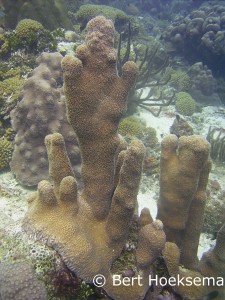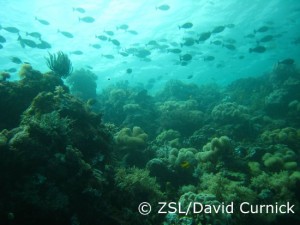In the following weeks, we will be expanding our EDGE Coral Reefs section of the website to provide you with more information on the world’s most Evolutionarily Distinct and Globally Endangered reef-building coral species. As such I feel now would be a good time to provide you with a quick introduction to the weird and wonderful world of corals.
Here goes…
What are Corals?

Ok so corals are in fact a class of animal; small invertebrate organisms most similar to jelly fish and anemones. Found in the sub-group ‘Cnidaria’ these animals posses simple body plans with radial symmetry. This essentially means that if you cut the species directly in half from any angle, then the two halves would be identical. Corals can broadly be divided into two sub-groups: the better known reef-building corals, or hard corals, and then soft corals which tend to superficially resemble plants. Most hard coral species host tiny microscopic algae known as ‘zooxanthellae’. Through a process known as symbiosis, both the algae and the coral polyp derive mutual benefits to such an extent that hard corals have evolved to rely on their counterpart for survival. The coral polyp acts as a source of protection against algal predation whilst the photosynthetic algae provides energy and nutrients to supplement the polyp’s own feeding. A specimen such as the pillar coral shown here is in fact an entire colony of individuals from one species.
Coral Reefs

Why are they important?
Coral reefs represent one of the most productive and biodiverse ecosystems in the world, second only to the high diversity found in tropical rainforests. This wealth of species (conservative estimates suggest 600,000 species) has great intrinsic value, since reefs represent areas of high evolutionary diversity. Importantly reefs are also the spawning ground for many commercially valuable species and as such hold considerable economic value (up to US$375bn). Through numerous sectors, it is approximated that coral reefs provide at least some benefits for over 850 million people. This includes around 275 million people who are highly dependent on reef ecosystems. As well as providing food, these systems attract income from tourism, provide natural coastal protection from storms and act as living laboratories essential for scientific advancement.
The colossal importance of these ecosystems, both from an intrinsic and extrinsic point of view is obvious. Nonetheless these habitats are under threat from a variety of sources, more of which will be detailed in future blogs in our coral series.